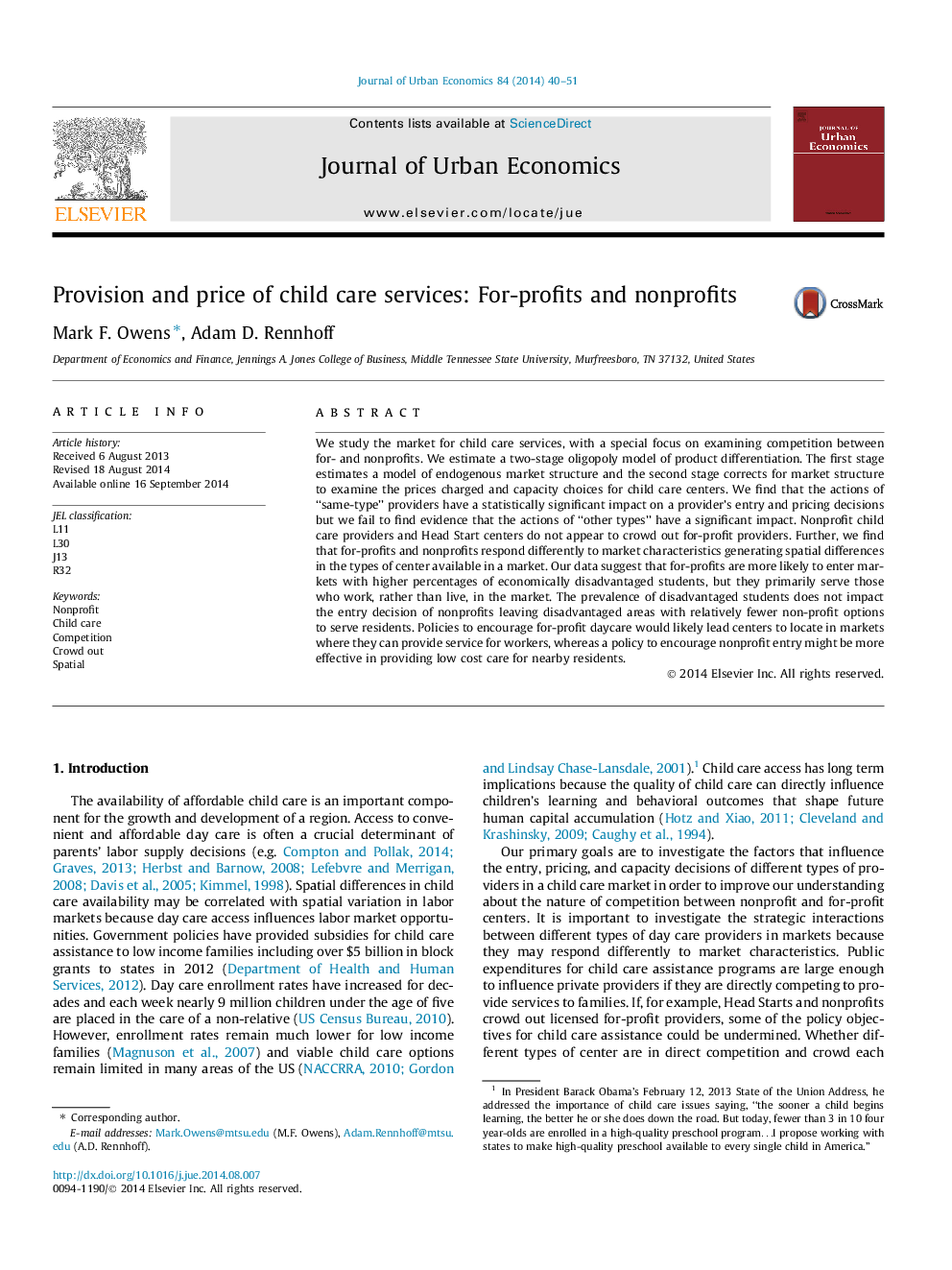| Article ID | Journal | Published Year | Pages | File Type |
|---|---|---|---|---|
| 7370921 | Journal of Urban Economics | 2014 | 12 Pages |
Abstract
We study the market for child care services, with a special focus on examining competition between for- and nonprofits. We estimate a two-stage oligopoly model of product differentiation. The first stage estimates a model of endogenous market structure and the second stage corrects for market structure to examine the prices charged and capacity choices for child care centers. We find that the actions of “same-type” providers have a statistically significant impact on a provider's entry and pricing decisions but we fail to find evidence that the actions of “other types” have a significant impact. Nonprofit child care providers and Head Start centers do not appear to crowd out for-profit providers. Further, we find that for-profits and nonprofits respond differently to market characteristics generating spatial differences in the types of center available in a market. Our data suggest that for-profits are more likely to enter markets with higher percentages of economically disadvantaged students, but they primarily serve those who work, rather than live, in the market. The prevalence of disadvantaged students does not impact the entry decision of nonprofits leaving disadvantaged areas with relatively fewer non-profit options to serve residents. Policies to encourage for-profit daycare would likely lead centers to locate in markets where they can provide service for workers, whereas a policy to encourage nonprofit entry might be more effective in providing low cost care for nearby residents.
Related Topics
Social Sciences and Humanities
Economics, Econometrics and Finance
Economics and Econometrics
Authors
Mark F. Owens, Adam D. Rennhoff,
